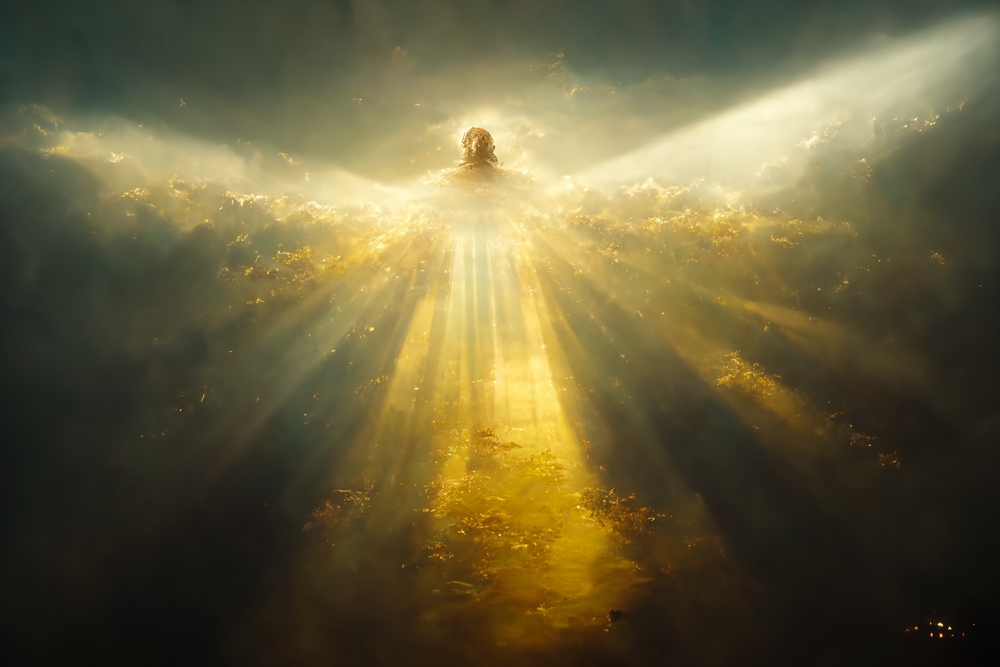Your cart is currently empty!
Science Explains One of Jesus Christ’s Greatest Miracles May Have Actually Been Real

The stories of Jesus Christ’s miraculous deeds have resonated through centuries, captivating believers and intriguing skeptics alike. Among these tales, the ‘miraculous catch of fish’ stands out—an event recounted in the Gospels where Jesus, with a few simple words, transformed an empty net into an overwhelming bounty of fish. This story, like many others attributed to Jesus, has sparked both wonder and questions. While some see it as a divine demonstration of power, others have searched for logical explanations behind the event. Could science offer insights that bridge the gap between faith and reason? New research has surfaced that may shed light on this age-old story, suggesting that the lines between miracle and natural occurrence might be more intertwined than once thought.
The Miraculous Catch: A Biblical Overview
In the Christian scriptures, the miraculous catch of fish is highlighted in two separate accounts. According to the Gospel of Luke, this event took place early in Jesus’ ministry. The apostles had been fishing all night without success when Jesus instructed them, “Put out into deep water, and let down the nets for a catch”. Skeptical but obedient, they cast their nets once more and were rewarded with such an overwhelming catch that their nets began to break. This event left the apostles in awe, prompting Simon Peter to fall at Jesus’s feet in recognition of his divine power.
The Gospel of John presents a similar yet distinct version that occurs after Jesus’ resurrection. In this account, the disciples once again face an unsuccessful night on the Sea of Galilee. At dawn, Jesus, who initially remains unrecognized on the shore, calls out, “Throw your net on the right side of the boat and you will find some”. When they follow his command, they catch 153 large fish—a detail that has fueled theological discussions for centuries. As the text describes, “even with so many, the net was not torn”, emphasizing the miraculous nature of the event.
Historians have noted that both accounts place significant importance on the Sea of Galilee, a body of water that has been central to many stories of Jesus’s teachings and acts. While believers see these moments as undeniable proof of Jesus’s divine power, researchers have begun to explore whether these events might have coincided with natural phenomena.
Recent studies have pointed to scientific explanations that could intersect with these biblical narratives. A team from the Kinneret Limnological Laboratory found that Lake Kinneret (modern-day Sea of Galilee) experiences a unique natural occurrence known as ‘fish-kill events.’ “The Sea of Galilee is a stratified lake. The upper layer is warm and oxygenated, while the lower layer is cold and lacks oxygen,” explained researcher Yael Amitai in an interview with The Times of Israel. This condition can lead to fish suffocating and floating near the surface, making them easy to catch.
The laboratory’s findings were bolstered by reports that similar events have been documented in other water bodies, such as Lake Erie and North Carolina’s Neuse River Estuary. The research indicated that strong winds could churn the lower, oxygen-deprived layers of the lake, pushing fish upward. The study’s authors noted that “current understanding of the physical limnology [ecosystem] of Lake Kinneret could provide a plausible scientific basis to those miracles.”
These insights lead to compelling questions about the interplay between historical narratives and natural science. Did Jesus’s command align with a rare environmental occurrence? And if so, does that lessen the story’s miraculous nature, or does it add depth to the ways we understand divine timing and nature’s wonders? “Studies may explain the appearance of large numbers of easy-to-collect fish close to the shore described in the biblical narratives,” the researchers wrote in their publication in Water Resources Research.
The presence of similar ‘fish-kill events’ as recently as the 1990s underscores the plausibility of such phenomena in ancient times. Yet, the specifics of when, why, and how these natural patterns occur remain a subject of intrigue, leaving room for both scientific exploration and theological reflection.
Scientific Insights into the Miracle

The pursuit of understanding biblical events through a scientific lens has long intrigued researchers. In the case of the miraculous catch of fish, scientists at the Kinneret Limnological Laboratory have provided substantial insights into how such an event might be possible. Their studies focus on Lake Kinneret, known historically as the Sea of Galilee, and its unique ecological dynamics. One of the most notable findings relates to the stratified nature of the lake. “The upper layer is warm and oxygenated, while the lower layer is cold and lacks oxygen,” said researcher Yael Amitai. This natural stratification can create the conditions for what are known as ‘fish-kill events,’ where fish are trapped in an oxygen-deprived environment and subsequently die.
These fish-kill events are triggered when strong winds disturb the lake’s stratified layers, causing the cold, anoxic water to rise to the surface. Fish caught in these conditions suffocate and float upward, making them easy to collect. The researchers noted, “Such events have been recorded in the modern era and offer a plausible explanation for the sudden abundance of fish described in biblical accounts.” For example, similar phenomena have been observed in North Carolina’s Neuse River Estuary and Lake Erie, where rapid temperature changes and wind patterns have led to mass fish deaths.
The Kinneret study employed advanced 3D modeling to simulate the lake’s behavior under specific conditions, reinforcing the idea that these natural occurrences could have happened during the time of Jesus. According to the research published in Water Resources Research, “[Our findings] suggest that environmental phenomena occurring 2,000 years ago could align with the biblical description of sudden, large catches of fish.” Such scientific parallels provide a new way to view these religious accounts, not as contradictions to faith but as complementary explanations that highlight the wonders of nature.
This raises thought-provoking questions: Could Jesus, known for his wisdom and deep understanding of the natural world, have predicted such an event? Or was it a moment of divine timing that science now helps us comprehend? While the researchers remain cautious about drawing definitive conclusions, their findings enrich the conversation around how historical events can be understood through multiple lenses.
The implications of these insights go beyond the miraculous catch itself, touching on broader discussions about the relationship between faith and science. As the research team stated, “Our work does not seek to disprove religious beliefs but to explore the natural phenomena that could inspire them.” This perspective invites a deeper appreciation for the interconnectedness of the natural world and human storytelling, where moments of awe can be shared by both the faithful and the analytical mind.

Faith Meets Science: Harmonizing Perspectives
The intersection of faith and science has always sparked intense debates, but stories like the miraculous catch of fish offer a unique opportunity to bridge these two realms. For some, the introduction of a scientific explanation to biblical events might seem like an attempt to undermine the spiritual significance of the stories. Yet, many scholars and theologians argue that understanding the natural processes behind these events can enrich, rather than detract from, their meaning. “Science can often provide a lens that deepens our appreciation of ancient texts,” noted the study’s authors.
Researchers from the Kinneret Limnological Laboratory emphasized that their findings were not meant to question the faith of believers but to explore the harmony that can exist between empirical evidence and spiritual narratives. “Our findings… provide a plausible scientific basis to those miracles,” they wrote in their published study. The possibility that natural events could align with the timing of Jesus’ actions opens discussions about the nature of divine intervention. Was Jesus, a figure revered for his profound teachings and understanding, aware of these natural patterns? Or was it a case of extraordinary timing that coincided with natural phenomena?
These questions do not seek to diminish the wonder of the biblical narrative but to show that the profound influence of such stories can coexist with scientific understanding. As Yael Amitai highlighted, “The Sea of Galilee’s unique conditions allow for occurrences that could be perceived as miraculous.” The real intrigue lies in how these interpretations can come together, demonstrating that science and faith might not be at odds but instead offer complementary insights into the same event.
Theologians have pointed out that miracles have historically been moments that inspire awe, regardless of whether they have natural explanations. In this context, knowing that a ‘fish-kill event’ could have contributed to the catch does not reduce its impact. Rather, it adds another layer of wonder to the timing and wisdom of Jesus’ directive. “Miracles, when viewed through the dual lens of science and faith, become symbols of a greater interconnectedness,” suggested the research team.
The Intersection of Wonder and Reality
The narrative of Jesus Christ’s miraculous catch of fish serves as a powerful testament to the enduring appeal of stories that intertwine faith and reason. Modern research, such as that conducted by the Kinneret Limnological Laboratory, shows that what may seem extraordinary can also be rooted in natural phenomena. This blending of science and spirituality invites a broader conversation: can understanding the world through empirical evidence coexist with the mysteries that inspire faith?
For many, knowing the potential scientific basis for these events does not diminish their significance. Instead, it adds depth to the narrative, illustrating how divine moments and the natural world can align in ways that inspire awe. Whether seen as an act of divine power or as a perfectly timed natural event, the story of the miraculous catch continues to captivate and provoke thought, reminding us of the vast and intricate connections between the world we observe and the beliefs we hold dear.
Sources:
- “The Significance of Jesus’ Healing Miracles: A Study of their Role in the
Synoptic Gospels and their Importance to Early Christianity.” Thesis, Georgia State University, 2008. https://doi.org/10.57709/1062080 - John, Jesus and History, vol. 2: Aspects of Historicity in the Fourth Gospel. Atlanta, GA: Society of Biblical Literature. https://books.google.co.in/books?hl=en&lr=&id=ryybidJYMAQC&oi=fnd&pg=PR5&ots=wn_BufKQT7&sig=xMKP-p7j1tgEjdgBD9KQcQsWRps&redir_esc=y#v=onepage&q&f=false
- “On the Treatment of Miracles in New Testament Scholarship.” Studies in Religion/Sciences Religiueses 40/4: 461–78. https://journals.sagepub.com/doi/10.1177/0008429811420693
